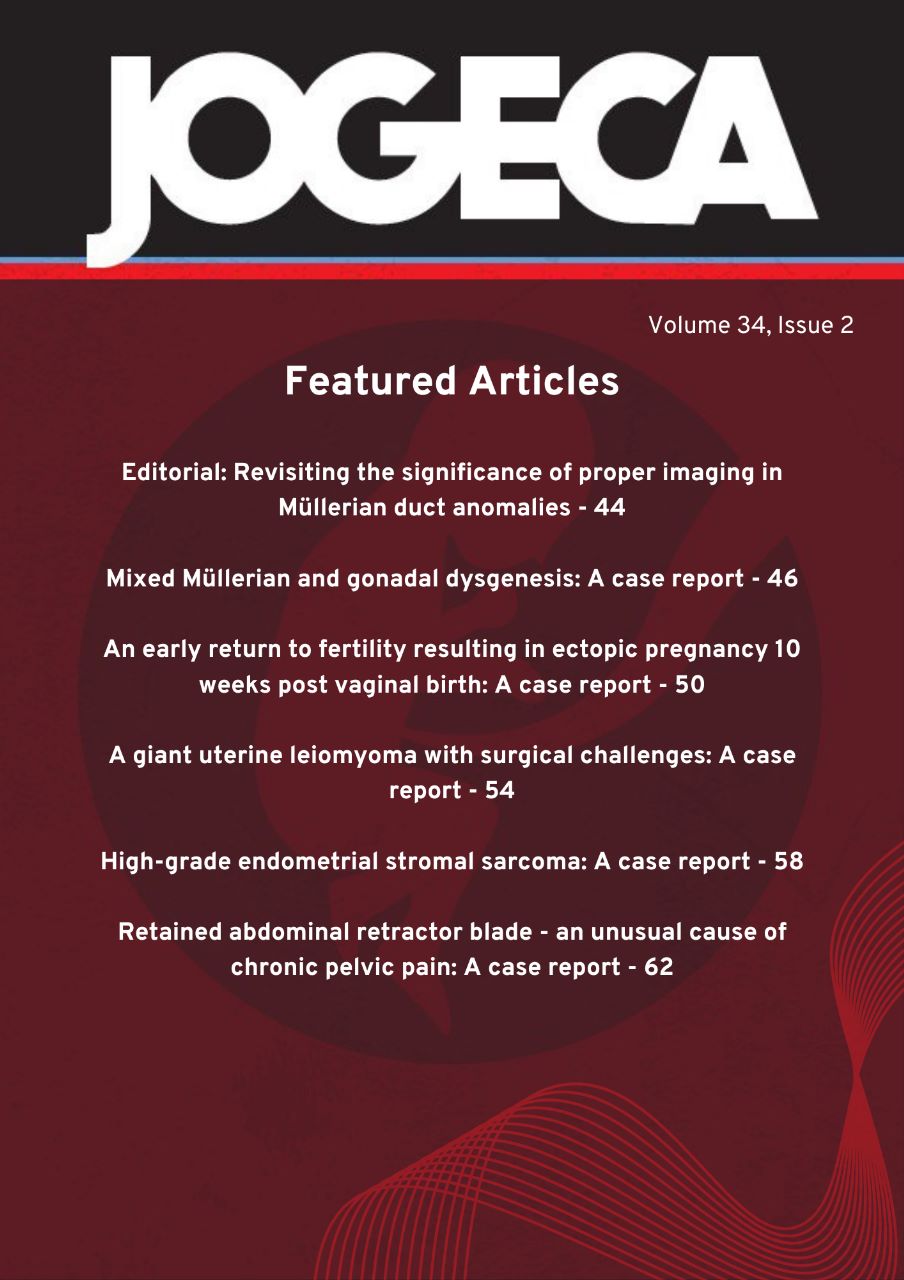HAYMAN COMPRESSION SUTURES : AN UNDERUTILIZED TOOL FOR MANAGEMENT OF UTERINE ATONY AND POSTPARTUM HAEMORRHAGE.
DOI:
https://doi.org/10.59692/jogeca.v36i1.103Abstract
Background: Postpartum hemorrhage (PPH) is the leading cause of maternal mortality in low- and
middle-income countries. Uterine atony accounts for 70–80% of PPH cases. Management of PPH is
usually based on a cascade beginning with the use of uterotonics and eventually hysterectomy in cases
of refractory PPH. Different compression suture techniques have been described and used for the
management of uterine atony where medical management is insufficient and preservation of fertility is
desired.
Case presentation: This is a series of four patients who presented to our facility and consequently
developed uterine atony that was unresponsive to medical management during cesarean delivery despite
the use of multiple uterotonics. All four patients had established risk factors for uterine atony, including
induction of labor, augmentation of labor, chorioamnionitis, or fetal macrosomia. Hayman compression
sutures were performed in all four patients with success. Estimated blood loss in the series ranged from
400 to 1200 mls. All patients recovered well with no complications reported during the postpartum period.
Conclusion: Hayman compression sutures offer an alternative to the more ubiquitous B-Lynch suture
with several advantages, including ease of placement and no need for a hysterotomy in PPH post vaginal
birth or placement post repair of hysterotomy in cesarean cases. Thus, the may be easier to perform for
junior health care professionals as well as in stressful situations.
Downloads
Published
How to Cite
Issue
Section
Categories
License
Copyright (c) 2024 The authors.

This work is licensed under a Creative Commons Attribution 4.0 International License.




